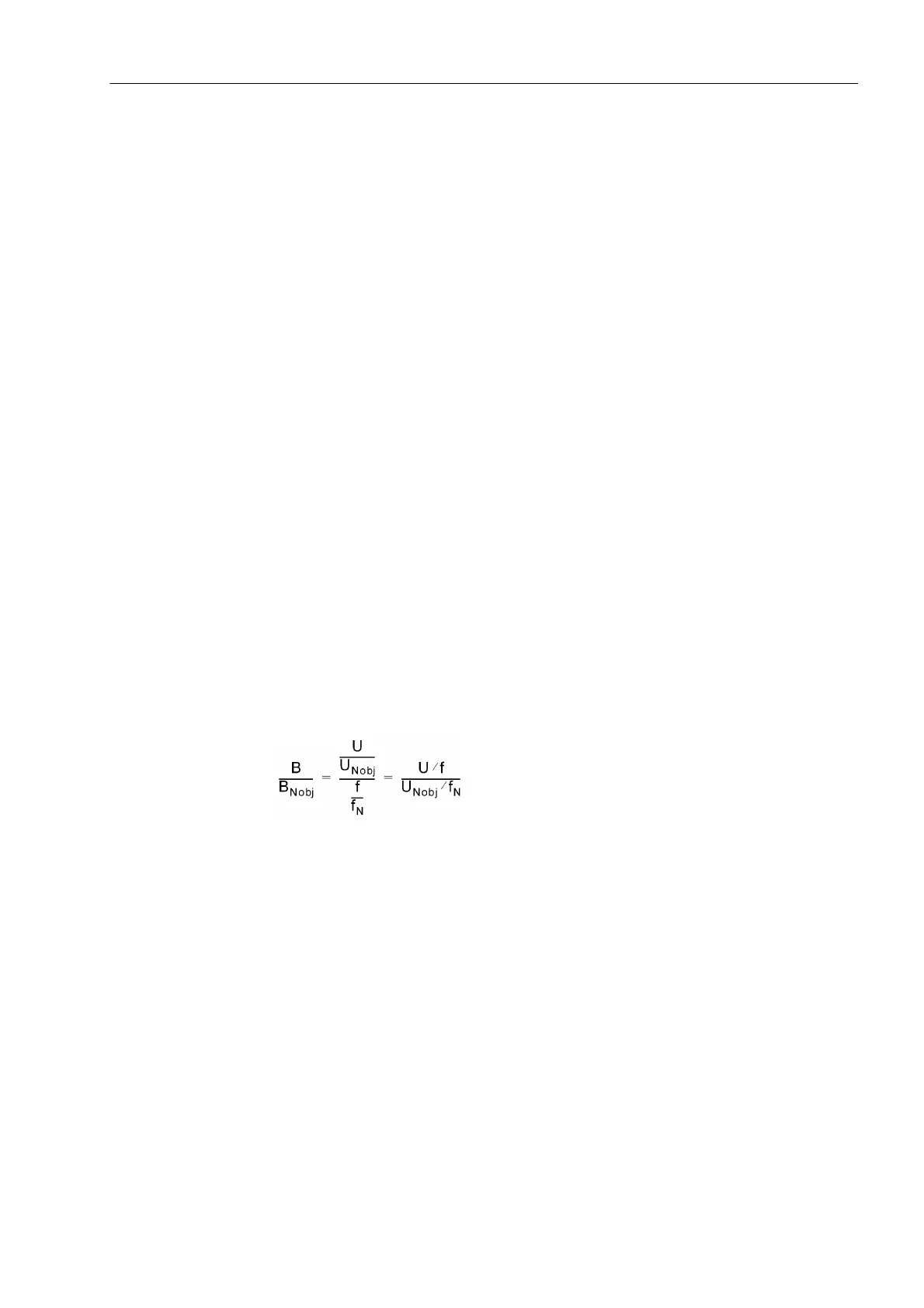2.11 Overexcitation Protection
239
7UT613/63x Manual
C53000-G1176-C160-2
2.11 Overexcitation Protection
The overexcitation protection is used to detect increased overflux or overinduction
conditions in generators and transformers, especially in power station unit transform-
ers, which cause impermissible temperature rise in the iron. An increase in induction
above the rated value leads very quickly to saturation of the iron core and to large eddy
current losses which cause impermissible temperature rise in the iron. This protection
is not applicable to single-phase busbar protection.
The overexcitation protection picks up when the permissible limit of induction is ex-
ceeded in the core of the protected object (e.g. power station unit transformer). In-
creased induction occurs, for example, when the power station block is disconnected
from the system from full-load, and the voltage regulator either does not operate or
does not operate sufficiently fast to control the associated voltage rise. Similarly a de-
crease in frequency (speed), e.g. in island systems, can cause increased induction in
the transformer.
2.11.1 Function Description
Measured Values The use of the overexcitation protection presumes that measured voltages are con-
nected to the device: This is therefore only possible for 7UT613 and 7UT633. Overex-
citation protection makes no sense on 1-phase busbar protection and is, therefore, not
available for this application.
The overexcitation protection measures the ration voltage/frequency U/f, which is pro-
portional to the induction B in the iron core (with invariable dimensions).
If the quotient UU/f is set in relation to the voltage and frequency under nominal con-
ditions of the protected object U
NObj
/f
N
, a direct measure of the induction B, referred to
the induction B/B
NObj
under nominal conditions, is achieved. All constant quantities
cancel each other:
The benefit of these referred values is that no explicit calculations are necessary. You
can enter all values directly referred to the induction under nominal conditions of the
protected object. The device has been informed about the rated values of the protect-
ed object and the voltage transformer data when setting the object and transformer
data.
The maximum of the three phase-to-phase voltages is decisive for the calculation. The
voltages are filtered by numerical algorithms. Monitoring is carried out throughout the
frequency tagging range.
Characteristics The overexcitation protection includes two definite time stages and a further thermal
characteristic which latter forms an approximate replica of the temperature rise
caused by overflux in the protected object.
As soon as a threshold (warning stage U/f >) has been exceeded, the pickup indi-
cation is output and a timer T U/f > starts. A warning message is transmitted sub-
sequently to the expiration of this timer. As soon as a second threshold (warning stage

